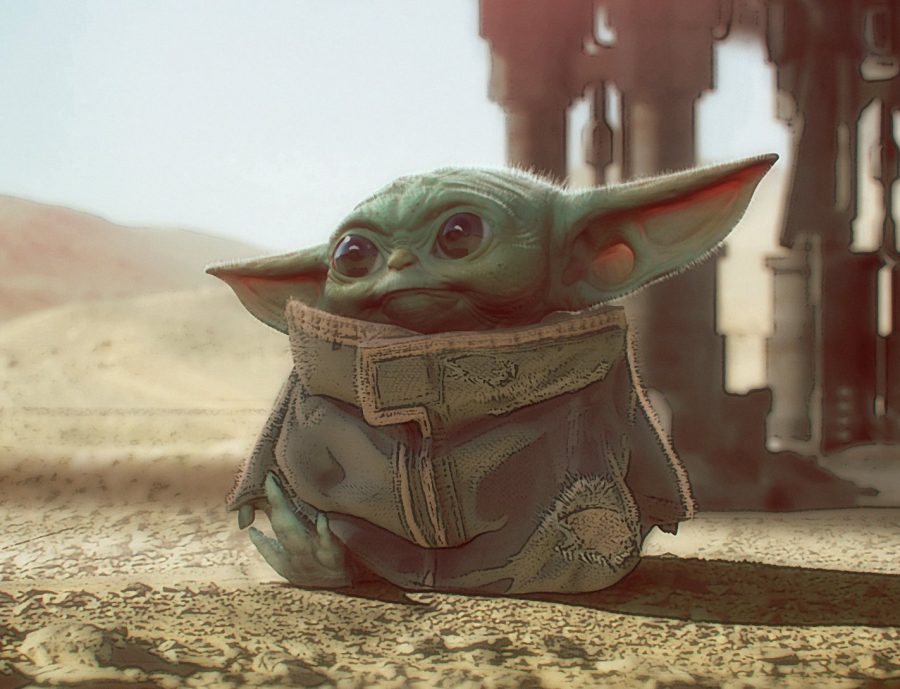A fistful of Imperial credits, “The Mandalorian” and Disney+
Courtesy of Jon Favreau//Twitter
“The Mandalorian” has gained attention for its violent tone and use of Western tropes.
TV has changed. Every week, it seems a new streaming service is launching, with traditional media companies like CBS, NBC or WarnerMedia launching their own with CBS All Access, Peacock and HBO Max, respectively, and tech companies like Apple getting into the content business with Apple TV+.
Having one cable subscription is no longer the norm; to be up-to-date with all the ongoing shows, it seems that many people, including Case Western Reserve University students, are being pressured to sign up for several services, with more and more having their own exclusive content.
But, if there’s one new streaming service that’s had the most buzz as a contender to the Netflix crown, outside of older challengers like Hulu or Amazon Prime Video, it would have to be Disney+, the media behemoth’s new streaming service.
Under the tenure of CEO Bob Iger, Disney has become increasingly focused on the acquisition of studios and intellectual property, whether it be Pixar, Marvel, Star Wars or 21st Century Fox, and this streaming service could be the end goal. Now, all of Disney’s new content and entire back catalog is completely accessible under a (relatively) affordable service; gone is the so-called Disney vault.
But is it really worth it? To make it as a new streaming service, there has to be a cultural zeitgeist around some piece of exclusive content on it, something that creates a conversion around it, forcing everyone to sign up, like “Game of Thrones” did for HBO Now, or “The Handmaid’s Tale” did for Hulu. Well, Disney is betting that their new “Star Wars” show, “The Mandalorian,” run by Jon Favreau, can do it for Disney+, and going by the first two episodes, they could be right.
“Star Wars” has always been a cultural behemoth. While it is primarily a film-based series, with the original 1977 “Star Wars” still the fourth-highest grossing movie of all time, adjusted for inflation, the franchise has been exceptionally successful in crossing the divisions of media forms, with video games, comic books and animated television shows.
However, “The Mandalorian” marks the franchise’s first step into live-action television (or is it a web series since it’s only on a streaming service?), taking place five years after the events of 1983’s “Return of the Jedi,” with the fall of the Imperial Empire.
For those not familiar, “Star Wars” is a space fantasy series focusing on the constant struggle between freedom and tyranny in a galaxy far, far away, with the episodic films mostly focusing on the grand adventures of space wizards with laser swords called “Jedi,” with that saga set to conclude in this December’s “Star Wars: Episode IX—The Rise of Skywalker.”
However, from the original “Star Wars,” viewers have always been made aware of different elements of that fantastical society, with the scene in Mos Eisley cantina and spaceport depicting its gritty criminal underbelly, from bounty hunters, to gangsters, to crime lords. It’s in this lawless part of the galaxy that “The Mandalorian” takes place in.
Following the adventures of a yet-to-be-named, constantly masked and seldomly speaking bounty hunter from the planet Mandalore—played by Pedro Pascal, who is very much in the “Boba Fett” mold—the show displays a new side of the galaxy, but one still very much rooted in the iconography of the original trilogy.
Despite the adherence to the feeling of “Star Wars,” the show’s aesthetic couldn’t be more different, establishing a violent, untamed atmosphere more steeped in the tropes of classic Westerns than epic space fantasies.
While “Star Wars” has tried to tell smaller scale stories before, such as in 2016’s “Rogue One: A Star Wars Story,” which tried to capture the feeling of a war film, it still reverted back to the classic “Star Wars” tone by the end.
However with the shift to a new media format, “The Mandalorian” seems adamant in its commitment to creating a space Western, with the soundtrack, composed by Ludwig Göransson, containing the flair of an Ennio Morricone score from the likes of “The Good, The Bad, and the Ugly.”
The setpieces call back to films like “Butch Cassidy and the Sundance Kid,” and the eponymous Mandalorian acts in the vein of Clint Eastwood’s “Man with No Name.” All these creative choices only reinforce to the viewer that this is a “Star Wars” we haven’t seen before.
Often lingering on shots of the bounty hunter just walking through the desert or preparing for battle, the show creates a solitary air, with only brief interactions so far with other characters, such as a gruff moisture farmer played by Nick Nolte who seeks the Mandalorian’s help to regain peace in his valley, or a mysterious client with seeming ties to the old Empire played by Werner Herzog.
There is much yet to unfold in the series, including the role of a seemingly huge element that was introduced at the end of the first episode, so we’ll have to see how it all turns out. Still, I can see the series’ faithfulness to the western genre and all its tropes potentially backfiring, creating a cliche of a series too focused on how it’s telling the story than what the story is.
On the other hand, if the level of quality continues and the upward trajectory of mystery and inventiveness maintains, we might truly have something special on our hands and a new hope for the future of the franchise in a post Episode IX world.

Shreyas (he/him) is a fourth-year student majoring in biology and philosophy. If he isn't yammering to you about how great "Pet Sounds" is or making bad...


